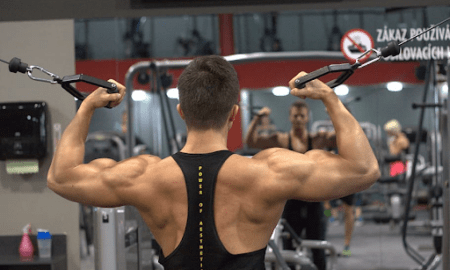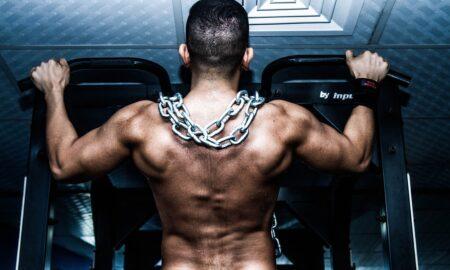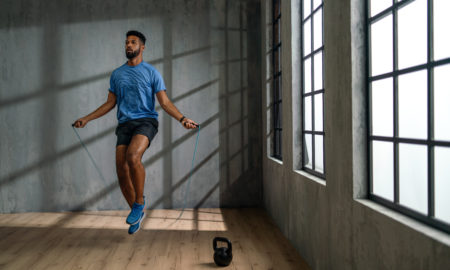There once was a fellow named Lou,
Who weighed a hundred and two;
Then he started to squat,
And believe it or not,
He grew, and he grew, and he grew.
That limerick isn’t mine. It originated in an IRON MAN article by Bradley J. Steiner. The words may not be exactly as Brad wrote them, but they’re close. Although I first read the limerick more than 30 years ago, it left an indelible mark on me.
From the beginning of my infatuation with bodybuilding—I was a teenager—I read and heard how important the squat was. It was considered the king of exercises. Even today you often hear of the importance of the squat, although probably not to the extent that I did during the 1970s.
From my more than 30 years of bodybuilding experience and extensive research and writing, I can tell you with certainty that the squat has the potential to be a fantastically effective exercise. It also, however, has the potential to be a useless exercise—even a harmful one.
Precisely how the squat is performed and incorporated in a program, and by whom, determines whether it’s fantastically effective, somewhat effective, barely effective, useless or harmful.
When I started bodybuilding, and for many years thereafter, the dominant view was that every bodybuilder should squat, and anyone who didn’t simply wasn’t serious about training. There were no caveats and no detailed written explanations of the squat technique that I ever came across. So I soldiered on with the squat, trained very hard on it, experimented and made many mistakes, but at times I got things right and made some good progress.
Caveat 1: The squat is not for everyone. The squat has the potential to be wonderfully effective if it’s performed correctly, but for some people the squat will never be an effective exercise no matter how much they work at it.
How well you squat is affected by your leverages—your torso, thigh and leg lengths and relative femur (thigh bone) and tibia (shinbone) lengths. Other important structural factors—including muscle insertion points, which vary from person to person to some degree—influence squatting efficiency.
Bodybuilders who have a good structure for squats tend to have legs and thighs of average or shorter-than-average length relative to their height. Those who have back or knee limitations will find the squat only marginally effective, if helpful at all. It may even be a harmful exercise for them. Seek safer, more effective alternatives.
While the squat wasn’t impossible for me, I wasn’t well suited to it. At 5’10” I have long legs and a short torso—not greatly out of proportion but enough to make the squat more challenging than it is for someone who has more typical leverages. My leverage made me more suited to the deadlift.
For me, the best free-weight exercise for the thighs is the parallel-grip deadlift done using a shrug bar. The trap bar, the first parallel-grip deadlift bar, has a rhombus shape. The shrug bar appeared later, and it has a hexagonal shape. Both enable the user to stand “inside” the bar. That produces greater knee flexion than the straight-bar deadlift permits, so it involves the thighs to a degree comparable to the squat but without the excessive forward lean that the squat produces for me and for others whose leverages are similar to mine.
The shrug bar has more space to stand in, which is why I prefer it to the original, more cramped design of the trap bar.
The parallel-grip deadlift has six substantial advantages over the squat:
1) It’s less technically challenging.
2) The bar is held beneath the body rather than precariously near the top of the spine as in the squat, and thus there’s no bar bearing down on you.
3) You don’t need squat stands, power rack or safety bars.
4) It’s easier to dump a failed parallel-grip deadlift than a failed squat.
5) You don’t need spotters.
6) You can easily do it from a dead stop at the bottom position.
The parallel-grip deadlift is tailor-made for many bodybuilders who don’t squat well. The parallel-grip bar will, however, benefit any type of bodybuilder. Encourage the management of your gym to get a parallel-grip deadlift bar. It should be required equipment for all gyms.
The parallel-grip deadlift is the equal of the squat for many bodybuilders. For some, it can be more effective.
—Stuart McRobert
www.Hardgainer.com
Editor’s note: Stuart McRobert’s first byline in IRON MAN appeared in 1981. He’s the author of the new 638-page opus on bodybuilding: Build Muscle, Lose Fat, Look Great, available from Home Gym Warehouse, (800) 447-0008, or at www.Home-Gym.com.




















You must be logged in to post a comment Login